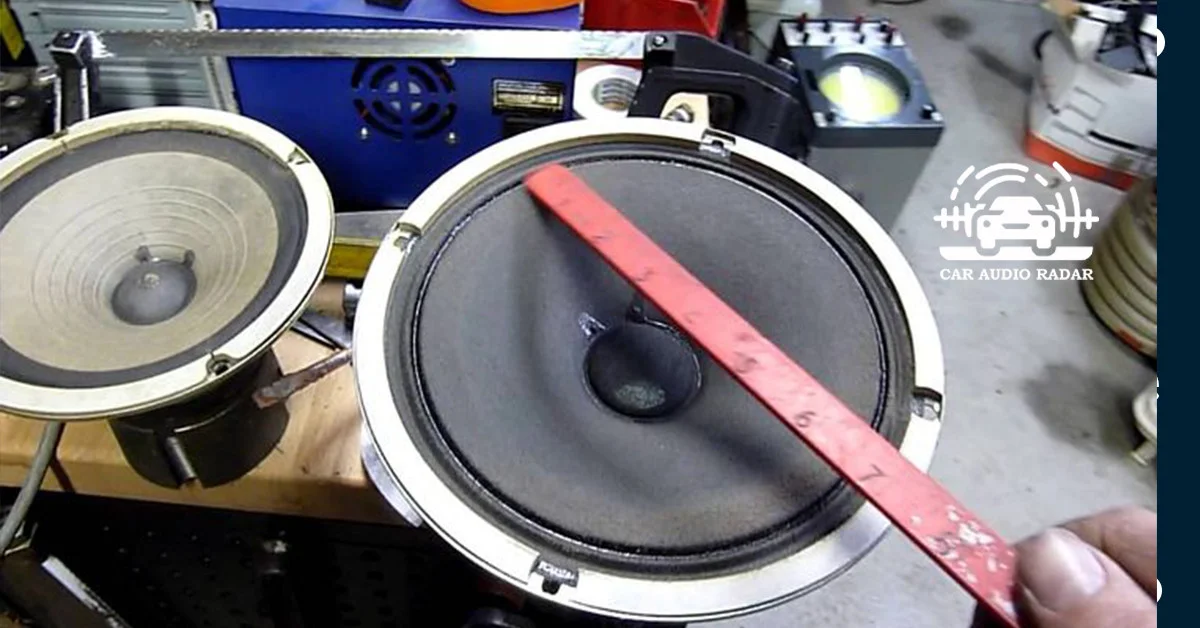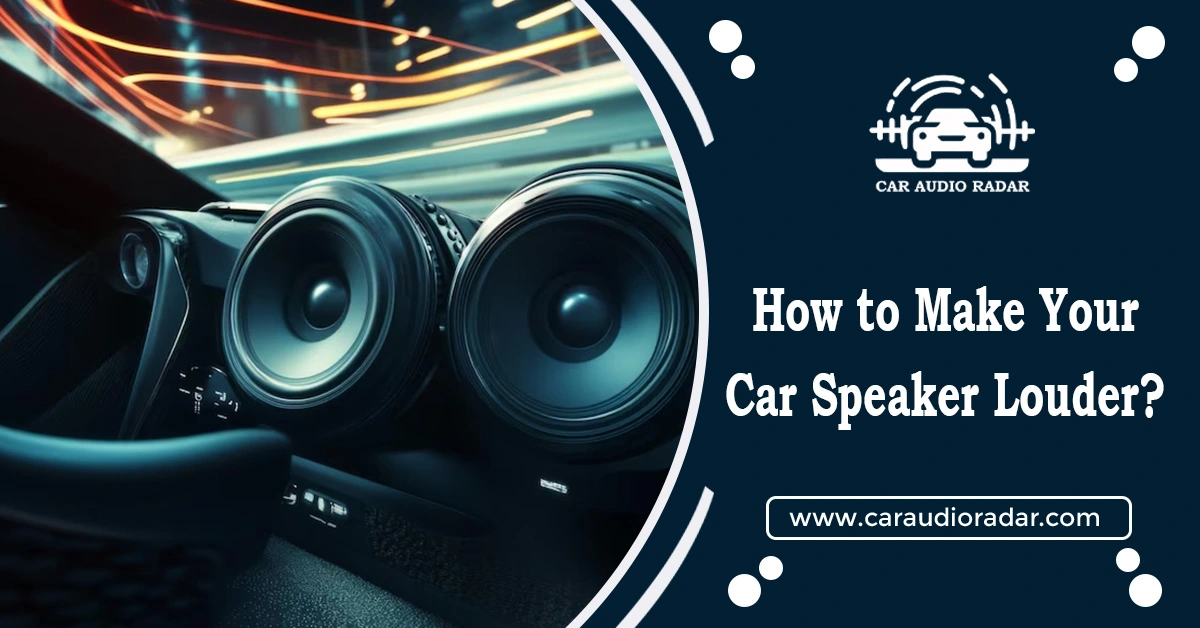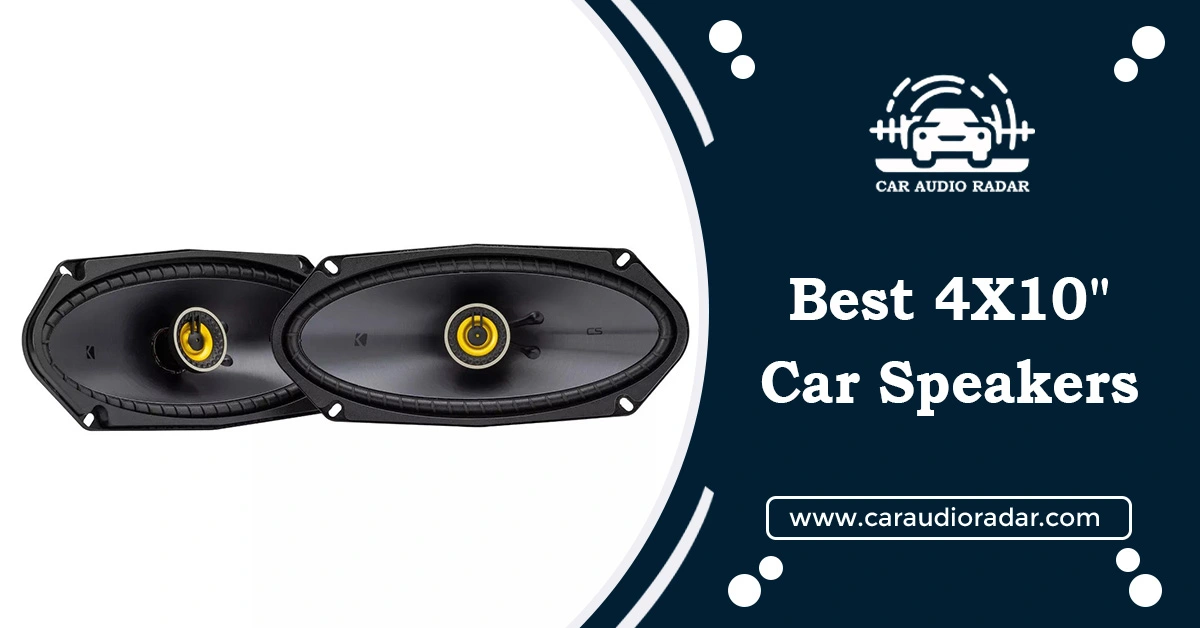
Jump to
What Size Speakers Are In My Car: A Buying Guide

What Size Speakers Are In My Car? Choosing the right size speakers for your car can make a significant difference in the sound quality of your audio system. Each speaker plays a crucial role in producing a well-rounded and immersive listening experience, from the smallest tweeters to the largest subwoofers.
By determining the correct size speakers for your car, you can ensure optimal performance and clarity in your music. In this article, we will discuss the various sizes of speakers available for car audio systems and how to determine which size is best suited for your vehicle.
Why Speaker Size Matters
The size of your car’s speaker affects how good and strong your music sounds. Big speakers usually make richer, deeper noises because they can move more air. They can also handle more power and make bass sound better.
Small speakers, however, are good at making clear sounds and can give more detailed music. The size of the speaker also matters for how it looks and fits in your car since there’s only so much room for installing audio parts.
What Size Speakers Are In My Car: A Complete Guide
Which Speaker Fit My Car? Here is a complete guide for you. Want to improve your car’s sound system or replace a broken speaker? Knowing the size of your car’s speakers is important. This easy guide will show you how to figure out the size of the speakers in your car.
What You Need
Before we start, you’ll need a few things:
- A tape measure or a ruler
- A flashlight
- A pen and some paper
Finding the Speakers
First, you need to find where the speakers are in your car. You’ll usually find them in the doors (front and back), the dashboard, or the back part of the car. Use your flashlight to help spot them if you need to.
Method 1: Measuring Speaker Size
Step 1: Speaker Removal
First, take the speaker out of the car. This may mean removing parts of the car’s inside, like panels or covers, using screwdrivers and maybe a little force.
Step 2: Measuring the Diameter
- After finding the speakers, it’s time to measure their size. You’re mainly looking to measure the speaker cone’s size, which is the main part of the speaker.
- Get your tape measure or ruler ready.
- Measure straight across the middle of the speaker cone from one side to the other to get the diameter.
- Write down this size for each speaker.
Step 3: Checking the Depth
- Besides how round they are, you must also know how deep the speakers go.
- Measure from the part where the speaker sits against the car to the back end of the speaker. This tells you how deep the speaker is.
- Write down this depth measurement for each speaker.
- Now that you know the diameter and depth of your car’s speakers, you can look for new speakers or upgrades that will fit just right. Make sure to recheck your measurements to be sure they’re right before you buy anything. With this guide, finding out the size of your car’s speakers is easy!
Step 4: Speaker Style
Finally, figure out what kind of speaker you have. It might be round, called a coaxial or a different type, like a component. You can usually tell by looking at it, but knowing what parts the speaker has is key to choosing a new one.
Method 2: Checking the Owner's Manual
Your first stop should be the vehicle’s owner’s manual. This booklet is full of helpful details, like the size and features of the original speakers.
Step 1: Finding the Section on Audio Systems
Search for the part about the car’s sound system. You’ll usually find it under “Tech Specs” or “Features.”
Step 2: Speaker Specifications
Here, look for a smaller section that talks about how big the speakers are. It should tell you the sizes of both the front and rear speakers. This info will match what your car came with from the factory speaker.
Method 3: Consult with Professionals
There’s no substitute for professional advice. Car audio specialists live and breathe all things sound.
- Visit Local Shops: Visit a few car audio speciality shops and ask for a consultation. Some offer to check your car themselves for a small fee or for free. Visit some car audio shops and ask for help. Some might even check your vehicle for free or for a small fee.
These experts can tell you the right speaker size and suggest the best upgrades for your car and what you like to listen to.
Method 4: Online Databases and Forums
When the manual and your measurements aren’t enough, asking car audio fans online can help.
Step 1: Searching Speaker Databases
Look up speaker sizes for your car online. Use search terms like “best car model audio specs” or “speaker size for [your car model].”
Step 2: Joining Car Forums or Groups
Find other people who have the same car or have changed their speakers. Websites like Reddit, car audio forums, or groups on social media about your car model are great places to get tips.
Step 3: Posting Questions and Pictures
If you still need help finding what you need, ask for help online. Share clear photos of your speakers — showing the front, back, and any labels — so people can give you the best advice.
Method 5: Try Different Sizes
- If you’re not sure about your car’s speaker size, you can try different ones until you find the right fit.
- It might take some time, but this is a good method if you’re eager to figure out what works best for your car.
Common car speaker Size
1. 6.5 Inches
6.5-inch speakers are popular because they sound good and have nice bass. They can be put in many cars and work well in front and back. This site is a common first choice when people want to improve their car’s sound.
2. 6x9 Inches
6×9-inch speakers are great for bass and can handle a lot of power. They’re usually put in the back of the car and help make the music sound complete, with clear singing and strong bass.
3. 5.25 Inches
5.25-inch speakers are smaller than 6.5-inch ones. They’re known for their clear and sharp sound, which makes them good for the front doors or dashboard. They might have less bass because they’re smaller, but if you add a subwoofer, your music can still have a good balance.
4. Others
Besides these common sizes, there are both smaller and bigger speakers. Smaller ones, like 4 inches, might be in smaller cars or fancy sound systems to handle high-pitched sounds. Bigger ones, like 8 inches or more, are usually used for deep bass sounds.
Upgrading Your Car Speakers
Getting better speakers for your car can make the sound clearer and louder and have more bass, giving you a better listening experience. Good aftermarket speakers can do this without costing too much compared to completely changing your audio system.
When considering upgrading your speakers, make sure they work well with your current audio setup, like the head unit and any amplifiers you have. This way, your new speakers will work their best, and you won’t have any electrical problems.
Speaker Installation Tips
Putting new car speakers in your car can be a fun DIY project that’s not too hard. Here are some tips to help you start:
- Before you begin, disconnect the car battery to stay safe and avoid any electrical problems.
- If your new speakers don’t fit the holes in your car, use mounting adapters to make sure they’re secure.
- Take your time with the wiring so you can avoid mistakes. Connecting the wires right will make your speakers sound better and last longer.
- Before you finish installing the speakers, try them out to make sure they sound good and adjust anything if needed.
Overcoming Common Speaker Installation Challenges
Putting new speakers in your car can be simple, but you might run into a few common problems:
- Fitting the speakers: Make sure the new speakers fit where the old ones were. If they don’t, you can use special adapters to fix this.
- Figuring out the wiring: Sometimes, understanding how the wires in your car work can be hard. Use a wiring diagram to help you connect everything the right way.
- Dealing with noise: Ensuring your car stereo is well-insulated can improve the sound. Check for any places where sound might leak out while installing the new speakers.
Conclusion
Understanding and controlling the size of your car’s speakers can be satisfying. It’s not just about making the music louder; it’s about making it clearer and more immersive, so you feel every beat and note of your favorite songs. Whether you want to upgrade your sound or completely change your audio system, the info you’ve learned from this guide helps you get started.
Now that you know why speaker size matters, you can start looking into improving your car’s audio. Now, you clearly understand what size speakers are in my car? And you can buy easily.
Frequently Asked Questions(FAQs)
Usually, car speakers come in common sizes. Front speakers are often between 3.5 and 6.5 inches, and rear speakers are usually 6×9 inches. But remember, speaker sizes can change depending on your car’s make and model.
Knowing the speaker size in your car is crucial when you want to upgrade your audio system for better sound quality. It ensures that the new speakers you purchase will fit perfectly in your car, providing the best sound experience.
Yes, there are different types of car speakers available, such as coaxial speakers and component speakers, which vary in size and sound quality. It’s important to choose the right type of speakers that fit your car and meet your audio requirements.
You can ensure the new speakers will fit in your car by checking the depth of the speaker and comparing it to the available space in your car. Additionally, consult the speaker’s fit guide or seek expert advice to guarantee a proper fit.
Cooper Katzeel
Car Enthusiast
Cooper Katzel, a dedicated car enthusiast, delves into the world of automobiles and audio systems. With a deep interest in cars and a focus on superior sound, Cooper’s expertise traverses the spectrum. His journey is a delightful exploration of automotive wonders and the world of car speakers. Cooper’s passion and technical know-how make him a trusted advisor for car enthusiasts.
Follow On Instagram
Recent Posts
- All Post
- Blog
- Car Speaker
- Car Subwoofer
- Pro Tips & Guides
- Back
- Speaker Wire



Dream Life in Paris
Questions explained agreeable preferred strangers too him her son. Set put shyness offices his females him distant.


